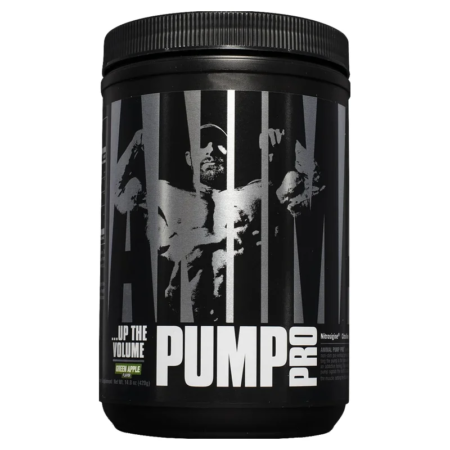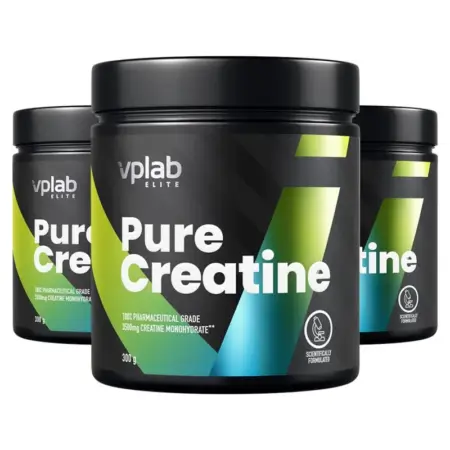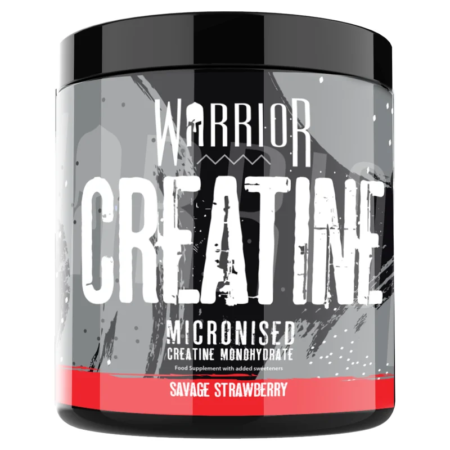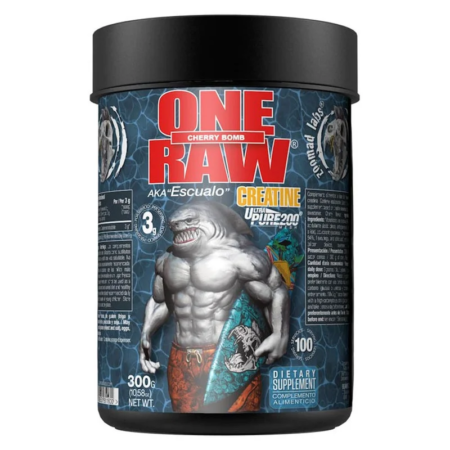Creatine
Creatine – to take or not to take?
The name creatine comes from the word kreas, the Greek word for “meat”. Creatine is a substance – a guanidinium compound, to be exact. It is not an actual amino acid, although the amino acids arginine, glycine and methionine are required to form creatine. Creatine is synthesized in the liver, pancreas and kidneys. In other words, the body is able to produce it on its own.
Creatine is found almost exclusively in animal foods such as raw fish and raw meat. Supplementation is suitable for athletes who do high power workouts or train hard, as well as for those who eat little or no meat.
Effect and benefits of creatine
Creatine is essential for the normal development of the body and the optimal functioning of organs (muscles, brain, nerves, vision, hearing and reproduction). One of the most important tasks of creatine is to supply muscles with energy. This is why creatine is one of the most popular dietary supplements for bodybuilders, track and field athletes, fighters and strength athletes as well as ambitious hobby athletes. Creatine is also responsible for muscle contraction, important nerve and brain functions, the increase in short-term performance and maximum strength of the muscles as well as for the reduction of cell damage.
Creatine requirements
The body produces about 1 to 2 grams of creatine every day. This process primarily occurs in the liver, but also in the pancreas and kidney. An average adult needs about 3 to 4 grams of creatine per day. Therefore, your body needs another 1 to 2 grams from food or supplements.
Creatine is absorbed through the intestine – whether it is natural creatine from food or synthetic creatine from dietary supplements – and thus reaches the consuming organs, tissues and muscles via the bloodstream.
Creatine in food
Creatine is primarily found in fish and meat, which contain between 2 and 7 grams per kilogram of food. Creatine can also be found in smaller amounts in cow’s milk. Sausage has a significantly lower creatine content than fresh meat. Since creatine is heat-sensitive and water-soluble, a considerable amount of creatine is lost due to the loss of water that occurs during heating – such as stewing, cooking or roasting meat – as well as the high temperatures themselves. Therefore, fresh fish, dried stockfish, fresh meat or dried meat are considered the best natural sources of creatine.
The most important creatine-containing foods:
- Herring (between 6.5 and 10 grams of creatine per kilogram)
- Pork
- Salmon
- Tuna fish
- Beef
Creatine in plant foods
Creatine is found almost exclusively in animal foods such as raw meat and fish, while fruit and vegetables only contain traces of creatine. Milk contains, for example, about 0.1 grams of creatine per kilogram while cranberries contain just 0.02 grams per kilogram. Beef, on the other hand, contains about 4.5 grams of creatine per kilogram. Only up to 20% of the creatine requirement can be covered by dairy products.
Creatine and creatinine
Creatine and creatinine are often mistakenly confused or thought to be the same. Creatinine is a degradation product of creatine. It has no function in the body and cannot be reconverted. This is why creatinine is excreted via the kidneys and urine. Around 1 to 2 percent of creatine is broken down into creatinine in the body every day.
Who benefits from taking creatine?
If you have a healthy body, it produces many of the substances that are necessary for the body’s functions itself, or you get everything important through a balanced diet.
Supplementation with creatine, however, has proven to be useful in a few sports. Creatine supplementation has proven effective in increasing short-term performance and maximum muscular strength in sports such as martial arts or weight training, bodybuilding, weight lifting or sprinting, as well as in reducing cell damage in endurance sports such as marathon running.
Vegans and vegetarians can also benefit from additional creatine intake. It is important to pay attention to the dosage. More about this in the next point.
If you suffer from kidney disease or limited kidney function, you should discuss supplementation with creatine as a precaution with your doctor, even though earlier rumors about the kidney-damaging effects of creatine are now considered incorrect .
Creatine dosage and time of administration
An average adult needs about 3 to 4 grams of creatine per day. The body itself produces 1 to 2 grams, which must be taken into account when determining the daily dose of creatine. An example: if you take in an additional 5 grams of creatine from 1.1 kg of raw beef. So please pay attention to the dosage instructions of the manufacturers!
The European Food Safety Authority (EFSA) has accepted so-called health claims for creatine. These say that creatine supplements – especially during intensive training – lead to an increase in muscle mass and strength. A daily intake of at least 3 grams of creatine as well as appropriate training is specified as a condition for increasing performance.
When is the right time to take creatine? It doesn’t matter when you take creatine during the day: morning, evening, before or after training. You can just take creatine with a glass of water.
Creatine regimen & (loading) charging phase
Andreas Hahn, nutritionist at the University of Hanover , writes in his book Nahrungsergänzungsmittel [Dietary Supplements] that supplementation with creatine only makes sense for people with regular, strong sporting activities. According to him, a short-term
supplementation – a creatine regimen of up to 8 weeks – with amounts of about 20 grams per day in the first week and 3 grams per day in the maintenance phase is considered harmless.
Many athletes take a creatine regimen for 7 to 10 days with a dosage of 20 grams per day (5 grams x 4 times daily). This is followed by a maintenance phase of about 5 to 11 weeks with 3 to 5 grams of creatine per day and a break of about 2 to 4 weeks.
Taking creatine permanently
According to the European Food Safety Authority (EFSA) , the permanent intake of about 3 grams of pure, high-quality creatine per day is considered safe. Many athletes even swear by it. However, you will not see any success without regular, long-term training. Creatine can be supportive, but does not replace your personal commitment.
Creatine is mainly stored in the skeletal muscles, where creatine is needed as an energy store for the muscles to work. It is assumed that an average adult can store around 4 to 5 grams of creatine per kilogram of lean body weight. Creatine is found in about 90 percent of skeletal muscle. In order to fill and increase the body’s own stores over a longer period of time, the permanent intake of creatine is recommended.
Creatine for muscle building
Thanks to creatine supplementation, there can be an effective increase in muscle mass, which is accompanied by an increase in muscle strength of 10 to 10 percent.
Bodybuilders, endurance athletes and fitness athletes are particularly interested in the effect of creatine in connection with short and intensive stress, since creatine can be used as a quickly available source of energy for short-term stress up to 10 seconds.
For example, if you train intensely and hard with weights, creatine supplementation can help you out perform your previous best performances, overcome any plateaus, lift heavier training weights, or do more repetitions.
Creatine binds water in muscle cells – especially in the course of a creatine regimen. This leads to an increase in weight, and the muscles look fuller and bigger.
Creatine is used to improve muscle strength and muscle building as an auxiliary therapy even in medicine. Many athletes also appreciate the effect of creatine in muscle building. Creatine is essential for the supply of energy to the muscles. In fact, ATP (adenosine triphosphate) is the directly effective energy carrier during muscle contraction. Since there isn’t always enough oxygen available for ATP synthesis during continuous training – i.e. muscle activity – your muscles must fall back on other quickly available energy stores. In the muscle, these are exclusively phosphate stores. And one of the most important phosphate stores is creatine phosphate.
Creatine supplement – ordering creatin
Creatine is one of the longest used and best researched dietary supplements, making it one of the most popular supplements among athletes. Even renowned nutritionists and the European Food Safety Authority (EFSA) recognize the efficacy of creatine when used and dosed correctly.
Storing creatine
Creatine can be stored for several years at room temperature and in a dry place. But if the temperature rises above 25 degrees, creatine disintegrates considerably after three days. The decomposition can be reduced by cooling. Creatine is water soluble. The decomposition depends strongly on the pH value. So if you dissolve creatinine in water or other liquids, you should store it at low temperatures.
Creatine powder, capsules or tablets
Creatine is best and, when stored properly, has the longest shelf life as a powder, capsule or tablet. It is important that you always pay attention to purity and quality! The amount of creatine contained and its purity are ultimately crucial to the effectiveness of the creatine supplement.
If you still have questions about buying or ordering creatine, we are always ready to assist you!
Our customers are also interested in Ephedrine HCL and our ECA Stack for sale. You should also have a look at our other supplements like Whey Protein and Fatburner Capsules.
Fatburners.at @ Social Media: LIKE & FOLLOW US!!
















